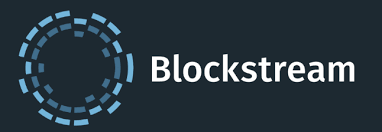Blockstream represents Lapps - part two
cryptocurrency·@gainer·
0.000 HBDBlockstream represents Lapps - part two

In this article, we've been working on Lapps apps and Blockstream for them. Last week, she published one new Lapp application (lightning-based application) daily. In the first part, however, we've only introduced four Lapps apps, so we'll write you the other three today.
NanoPOS
NanoPOS is a Point of Sale built on Lightning Network. Quite a lot of complicated English words in just one sentence, though? But when we translate them and connect them with everything we already know about Blockstream, it will certainly not be difficult to understand what NanoPOS is going on.
Point of Sale, in this sense, describes a payment that takes place personally between the merchant and the customer. This would only allow the application and the QR code. If you have your NanoPOS app downloaded in the mobile and the merchant generates a QR code, you can only scan this QR code and confirm with a payment. The NanoPOS application itself will take over the transfer.
This application should bring benefits especially for traders who sell the same type of goods every day. They can include, for example, cafes or fast food. It would allow them to be exempted from the high fees they have to pay banks, for example, just for allowing their customers to pay by card. The ability to purchase a product with NanoPOS is currently available at Bitcoin Embassy in Tel Aviv.
IfPaytt
IfPaytt is a simplified version of the Paypercall app. This is relatively demanding for people who do not have programming experience. But if they also want to use the Lapp application, IfPaytt is the ideal solution for them.
Users will be able to use apps to build applets (a simple application that is only launched using a web browser, for example), which will allow them to access the payment on the web site. Once they choose the product or service they are interested in, just make a transfer with IfPaytt and the service they require or the product will be purchased.
In simple terms, IfPaytt works on the If If Then That principle ("If This, Then That" - in the free translation "If something happens, say something else"). At first glance it may sound chaotic and unclear, but it's nothing but a simple action that triggers another trigger action (Trigger). An example would be an application that will automatically turn on your CryptoMagazine after you open a web browser (very simply).
Lightning Jukebox
Blockstream ended the Lapps weekend in a big style. This app allows you to play whatever you ask for on the Jukebox (play box). However, it will cost a micropay (a very negligible sum in the cryptome).
This Lapp works on a very similar principle, such as NanoPOS. Once you ask for a song or video to be added to the game sheet, Jukebox will generate a QR code. After that, you only need to scan QR and confirm the payment.
So far, this system is only connected to Youtube. However, for the future, it's also planned to connect with Spotify or Apple Music. In these applications, however, it must be remembered that something like this will not change the world, nor will it bring cryptomas and LN glory. It only works to demonstrate how the Lightning Network has the potential, as well as the legacy systems like the jukebox can translate into today's life.
conclusion
Finally, all of the above mentioned apps in this article, but also in the first part, say that they work under the Lightning Charge. Lightning Charge is a microprocessing and micropayment processing system. However, it also helps to create Lightning Apps (Lapps) as it tests the implementation of Lightning Network. This implementation is mainly attempted by Blockstream, which proves its seventh Lapps, that it certainly does not.